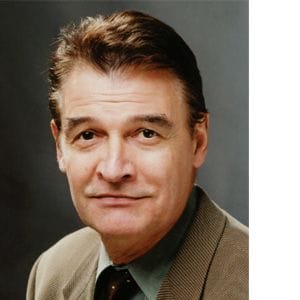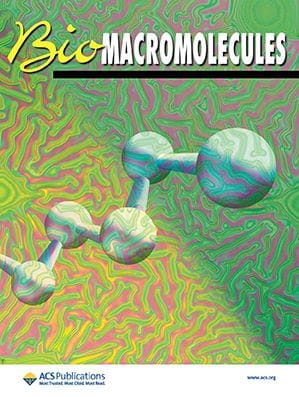In this interview, Prof. Percec discusses his perspective on the past and the future of his field in honor of the journal's 25th Anniversary.

In 2000, Professor Virgil Percec wrote an article in the very first issue of Biomacromolecules (with collaborator Marian N. Holerca)—and now, Prof. Percec, along with Dr. Dipankar Sahoo, has published a new Perspective article in celebration of the journal’s 25th year of publishing.

After seeing this scintillating paper, we reached out to Prof. Percec for his unique take on the evolution of biopolymer research during this time and throughout his career.
Which research project in your career have you enjoyed the most? And which was the least enjoyable?
There is more than one research project that I enjoyed the most. All the projects I enjoyed the most are the ones that led to discoveries we made in our laboratory. Since discoveries are made by accident, the most enjoyable projects were the one that took the least amount of time from the research failure to the realization of the discovery. The most enjoyable projects were those that led to the development of a new research field which opened the door for additional discoveries both in our and in many other laboratories all over the world.
The accidental discovery of self-organizable dendrons, dendrimers and dendronized polymers is one example. They provided access to the discovery of chiral Frank-Kasper phases and quasicrystals in soft condensed matter and pioneered the elaboration of complex functional biological-like systems. About fifteen years after their discovery in supramolecular dendrimers in our laboratory, these Frank-Kasper and quasicrystal phases were also discovered in block copolymers and other forms of soft and living matter. They also paved the way for the discovery and elucidation of new concepts by our laboratory such as self-acceleration and self-interruption of organic and polymerization reactions, memory effects, biological membrane mimics based on amphiphilic Janus dendrimers and Janus glycodendrimers and one-component systems for the delivery of mRNA. Frank-Kasper phases and quasicrystals are spherical helices similar to spherical viruses and complement the helical chirality of rod-like viruses.
Self-organizable dendrimers also facilitated the discovery in our laboratory of Nickel as a replacement for the more expensive and least reactive Palladium in metal-catalyzed cross-coupling reactions and of other synthetic methodologies. Ni-catalyzed cross-coupling replaced Pd-catalyzed cross-couplings in both academia and in industry and it is by itself a new field of research.
And which was the least enjoyable?
The least enjoyable refers to the discovery of the fist methodology to synthesize monodisperse polymers similar in chain length uniformity to proteins by self-interrupted living polymerization. This project was the least enjoyable since currently there is only one living polymerization methodology, living metathesis ring opening polymerization, that can facilitate it. A larger diversity of living polymerizations suitable for this self-interruption concept would have changed the synthesis of polymers at their most fundamental level.
What do you think has been the single greatest accomplishment in biopolymer science in the past 25 years?
The discovery and development of helical chirality of macromolecular and supramolecular systems. Helical chirality was known in Nature for a long period of time. Tornados and hurricanes exhibit helical chirality that have inspired art and architecture. It took more than 2,000 years to discover helical chirality in proteins and nucleic acids, but it took a much shorter time to discover it in synthetic systems. However, to reach the perfection of synthetic systems and assemble complex functional systems based on helical chirality with the same level of precision of biology will require a great deal of extensive research and discoveries.
If you could begin your postgraduate research again now, would you do anything differently?
No. With the current analytical and structural analysis facilities, the same approach to the helical chirality of polyphenylacetylene would provide an accelerated landing to elucidate the mechanism of helical chirality in synthetic polymers, supramolecular assemblies with applications approaching the precision of complex biological systems. Biology is entirely constructed with helical chirality, while synthetic helical chirality is not yet competitive with that of biological macromolecules and of their assemblies.
What advice would you give to future generations of biopolymer researchers?
When you fail a research experiment or realize that a research hypothesis was incorrect, learn from it. Do not give up before to realize the discovery you may have made. Do not be afraid to overcome challenges and to explore and pursue new concepts. Scientific innovation leading to discoveries is the key.
Please stay tuned as we continue Biomacromolecules' 25th Anniversary celebrations throughout the year!

From Frank–Kasper, Quasicrystals, and Biological Membrane Mimics to Reprogramming In Vivo the Living Factory to Target the Delivery of mRNA with One-Component Amphiphilic Janus Dendrimers
DOI: 10.1021/acs.biomac.3c01390
